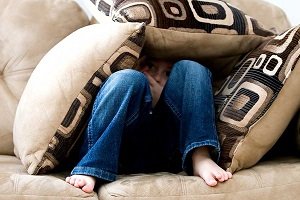How to Get Rid of Bipolar Disorder?
TweetKnow Bipolar Disorder and Mania to get Help
Bipolar disorder also known as manic-depressive disorder (Bipolar Affective Disorder) is a diagnosis which is psychiatric in nature and enunciates a category of mood disorders defined by presence of one or more bouts of abnormally elevated energy levels and one or more depressive episodes. The elevated moods are named as hypomania. People who experience manic episodes experience features of both mania and depression at the same time. These episodes are sandwitched between times of normal mood, but it is not uncommon to see depression and mania repeating alternatively also known as rapid cycling.
Extreme manic episodes can sometimes lead to psychotic symptoms such as delusions and hallucinations. The Bipolar disorder is divided as follows based on the nature and severity of mood episodes experienced;
- Bipolar I,
- Bipolar II,
- Cyclothymia,
- Other types
The range in which Bipolar is divided is often referred to as bipolar spectrum.
How to diagnose Bipolar properly?
Diagnosis is generally self-reported experiences of an individual. They are also reported abnormalities in behavior as mentioned by family members, friends or co-workers. It is often followed by secondary signs and symptoms observed by a psychiatrist or nurse. Assessment is carried on an outpatient basis; inpatient won't be needed if the case dis percieved as dangerous to self or others. DSM IV - TR and ICD-10 are most commonly used criteria for diagnosis and definition of Bipolar. The latter criteria is generally used in Europe and other regions while DSM is used in the USA and other regions.
While people's moods rise and fall as various life events are experienced, most moods never become that extreme or feel uncontrollable. As depressed as an average person might get, it won't take too much for them to recover and start feeling better.
Understanding two poles of Bipolar for better help
The range is very diverse for Bipolar same as the poles of the earth. Check out the stages below:
- One side of the scale there is severe depression, moderate depression, and mild low mood.
- In the middle of the scale is normal or balanced mood.
- At the other end of the scale are hypomania and severe mania. A person having a hypomanic episode may feel very good, be highly productive, and function well.
Means of recovering from Bipolar Disorder
- Hope - Positively believing that you can recover mood disorder is essential for recovery.
- Change your perspective towards life and things
- Personal Responsibility - Raise alarm and ask for help when you feel awkward
- Educate yourseld about your illness
- Support - Get support from others and don't shy away
- Have patience - Immediate and total cure is never expected rapidly. Have patience with the treatment process.
- Communicate openly with your treatment provider.
- Always take medication as prescribed.
- Get therapy. Medication only manages some of the symptoms of bipolar disorder. It is the therapy which teaches you things you can use while leading normal life.
More tips on the positive energy part for Bipolar
- Have a routine defined for sleeping and waking up. Take help and Go to bed and wake up at the same time each day.
- Avoid exercising or doing other stimulating activities late in the day.
- Avoid or minimize napping
- No caffeine after lunch or alcohol at night.
How you can get help from Support groups?
Consider going to counseling together with your partner to better cope with the disorder. Have family discussions about feelings and keep everything open. Allow your spouse enough space so they don't feel threatened, suffocated, constrained or condemned. Never put anyone in physical danger. If you feel your spouse is a threat, remove your family from the situation immediately.
Tips on how and where to find help for Bipolar
- State hospital outpatient clinics
- Family services, social agencies, or clergy
- Peer support groups
- Private clinics and facilities
- Employee assistance programs
- Local medical and/or psychiatric societies.
- Mental health specialists, such as psychiatrists, psychologists, social workers, or mental health counselors
- Health maintenance organizations
- Community mental health centers
- Hospital psychiatry departments and outpatient clinics
- Mental health programs at universities or medical school
Symptoms of bipolar disorder may be especially difficult to discern in children because they may be mistaken for age-appropriate emotions and behaviors of children and adolescents. Also, their symptoms of bipolar disorder may vary somewhat from adults. For example, when manic, children and adolescents are more likely to be irritable and prone to destructive outbursts than to be elated or euphoric. When depressed, they may complain about headaches, stomach aches, tiredness, poor performance in school, poor communication, and extreme sensitivity to rejection or failure.
Women are more commonly diagnosed with type 2 bipolar disorder. In addition, women are more affected by rapid cycling bipolar disorder, a complex variant of the disorder, than men. In some patients, bipolar disorder assumes a seasonal pattern, marked by a cyclic relation between the onset of the mood episode and a particular 60-day period each year.
Bipolar Disorder Definition
Bipolar Disorder, as its name suggests, is a condition characterized by periods of high mood in addition to the low moods that occur in the more common "unipolar" depression.
Formerly called manic-depressive illness, it is characterized by the occurrence of mania (euphoria) alternating with bouts of depression. Bipolar disorder is characterized by changes from one extreme mood to its polar opposite - for instance, from depression to the euphoric or grandiose state known as mania. The mood disturbances can be so severe that the individual loses touch with reality. He or she may feel suicidal when depressed, and when manic may engage in risky or self-destructive behavior such as spending large amounts of money, gambling compulsively, etc.
Information on Bipolar Disorder
Bipolar Disorder is the form of depressive illness in which the sufferer has periods of being on a high, as well as periods of depression. It is presumed to be a chronic condition because the vast majority of individuals who have one manic episode have additional episodes in the future.
Bipolar disorder typically begins in adolescence or early adulthood and continues throughout life. It is often not recognized at first as a serious disorder, and people who have it may suffer needlessly for years or even decades. This disorder is not a character flaw, and it is not your fault. It is a serious mood disorder that affects a person's ability to function in every day activities. It affects one's work, one's family, and one's social life.
As defined by the American Psychiatric Association, bipolar disorder includes 4 main mood episodes-Mania, Hypomania, Depression, and Mixed Mood.
It should be noted that this disorder does not consist of mere "ups and downs". Ups and downs are experienced by virtually everyone and do not constitute a disorder. The mood swings of bipolar disorder are far more extreme than those experienced by most people.
The two extremes of bipolar can also rapidly change from day to day or even from hour to hour.
Manic Depression has two distinct sides-the depressive state and the manic state.
Manic-depression distorts moods and thoughts, incites dreadful behaviors, destroys the basis of rational thought, and too often erodes the desire and will to live. It is an illness that is biological in its origins, yet one that feels psychological in the experience of it; an illness that is unique in conferring advantage and pleasure, yet one that brings in its wake almost unendurable suffering.
The manic stage of bipolar disorder shares the underlying common characteristics of an elevated mood, and is characterized by an increase in the quantity and speed of physical and mental activity.
Between episodes, patients with bipolar disorder exhibit depressive moodiness and sometimes high-energy activity; disruption in developmental and social functioning is more common than in unipolar disorder.
When the sufferer is in the depressive episode they may suffer loss of interest, reduced energy, apathy, lowered concentration and attention, reduced self-esteem and self-confidence, guilt,etc.
Depressive episodes can be classed as either one of the following; mild, moderate or severe.
| Classification of bipolar disorder | |
| ICD-10 | DSM-IV |
| Manic episode | Hypomanic episode |
| Hypomania | Manic episode |
| Mania | Mild |
| Mania with psychosis | Moderate |
| Severe | |
| Severe with psychosis | |
| Bipolar affective disorder | Bipolar I and bipolar II disorders |
| Currently hypomanic | Current (or most recent episode) |
| Currently manic | Hypomanic |
| Currently depressed | Manic* |
| Currently mixed | Depressed |
| In remission | Mixed* |
| Cyclothymia | |
| *Excludes bipolar II. | |
Hypomania
The less severe form of high in bipolar disorder is hypomania. People with this form have increased energy and tend to become more active than usual. They tend to overestimate their capabilities and fail to see the obvious risks involved in their ventures.
Special considerations
- Remember the manic patient's physical needs. Encourage her to eat. Provide a diet high in calories, carbohydrates, and liquids.
- Collaborate with other staff members to provide consistent responses to the patient's manipulative or acting out behaviors.
- As the patient's symptoms subside, encourage her to assume responsibility for personal care.
- Provide emotional support, maintain a calm environment, and set realistic goals for behavior.
- Provide diversionary activities suited to a short attention span; firmly discourage the patient if she tries to overextend herself. Provide structured activities involving large motor movements to expend surplus energy. Reduce or eliminate group activities durIng acute manic episodes.
- When necessary, reorient the patient to reality. Tactfully divert conversations when they become intimately concerned with other patients of staff members.
- Set limits in a calm, clear, and self confident manner for the manic patient's demanding, hyperactive, manipulative, and acting-out behaviors. Setting limits tells the patient that you'll provide security and protection by refusing inappropriate and possibly harmful requests. Avoid leaving fill opening for the patient to test you of argue with you.
- Listen to requests attentively and with a neutral attitude. Avoid power struggles if a patient tries to put you Oil the spot for an immediate answer. Explain that you'll seriously consider I he request and will respond later.
- Encourage solitary activities such as writing out one's thoughts.
- Watch for early signs of frustration (when the patient's anger escalates from verbal threats to hitting an object). Tell the patient firmly that threats and hitting are unacceptable. Explain that these behaviors show that she needs help to control her behavior. Inform her that the staff will help her move to a quiet area to help her control her behavior so she won't hurt herself or others. Staff members who have practiced as a team can work effectively to prevent acting-out behavior or to remove and confine a patient.
Facts and Tips about Bipolar Disorder
- Bipolar disorders are a number of medical situations also know depressive disorders and depressive disorders affect the methods of a person's brain functions.
- Damaged relationships, poor job or school performance, and even suicide can be the symptoms of bipolar disorder.
- Usually in that case person needs immediate hospital care. Because the person also has depressive episodes, typically lasting at least two weeks and mania or depression must be a major change from the person's normal behavior.
- Head injury, stroke, or tumor may damage the brain, causing a seizure, depression, consuming alcohols which are some cause of bipolar disorder.
- For treat this disorder used includes lithium, anti-convulsants and anti-psychotics medication and other non-pharmacological treatments, for example electroconvulsive therapy, are also helpful and can be life saving in many cases.
- Another treatment used cognitive behavioural therapy, family-focused therapy, and psychoeducation and interpersonal and social rhythm therapy the most effective in regard to residual depressive.
Treatment of Bipolar Disorder - Effective treatment is available for bipolar disorder.
Rapid Cycling Bipolar Disorder the essential feature of rapid cycling bipolar disorder is the occurrence of four or more mood episodes during the previous 12 months.
What is the cause of Bipolar Disorder? Learn about various causes of bipolar disorder such as family tree, your genes, loss of job, etc.
What are the symptoms of Bipolar Disorder (manic episode of bipolar disorder, mixed episode)? There are various symptoms of bipolar disorder.
Bipolar II Disorder - Learn various aspects of bipolar ii disorder
Can Adolescent have bipolar disorder? Bipolar disorder can occur in adolescents and has been investigated by federally funded teams in children as young as age 6.
Can Children Have Bipolar Disorder? Children experience faster mood swings than adults, often cycling many times within a day.
Bipolar disorder - a case study Millions of Americans diagnosed with mental illness lead healthy lives because of information discovered through clinical studies.
History of bipolar disorder - Bipolar disorder has left its mark on history.
Importance of Bipolar disorder diagnosis Diagnosis is important, because it guides treatment decisions.
What is the need of diagnosis in childhood? The importance of proper diagnosis cannot be overstated.
What are the types of bipolar affective disorder? Learn about various types of bipolar disorder.
How can u help ur child and what is the role of parents? Your child can reduce the minor mood swings and stresses that sometimes lead to more severe episodes by adhering to the following tips.
Bipolar Disorder Trileptal Trileptal (oxcarbazepine) is currently FDA-approved only for use in treating certain types of seizure disorders.
List of bipolar disorder famous people
Why not join our forums and keep learning many interesting things while having fun with other forum members? Believe us, you'll just love it. |


Sometimes crying or laughing
are the only options left,
and laughing feels better right now.

Current Issue
 Self Help Leaflets Take the help of our self help leaflets or booklets. |
 The DG Magazine All about living with depression |


















